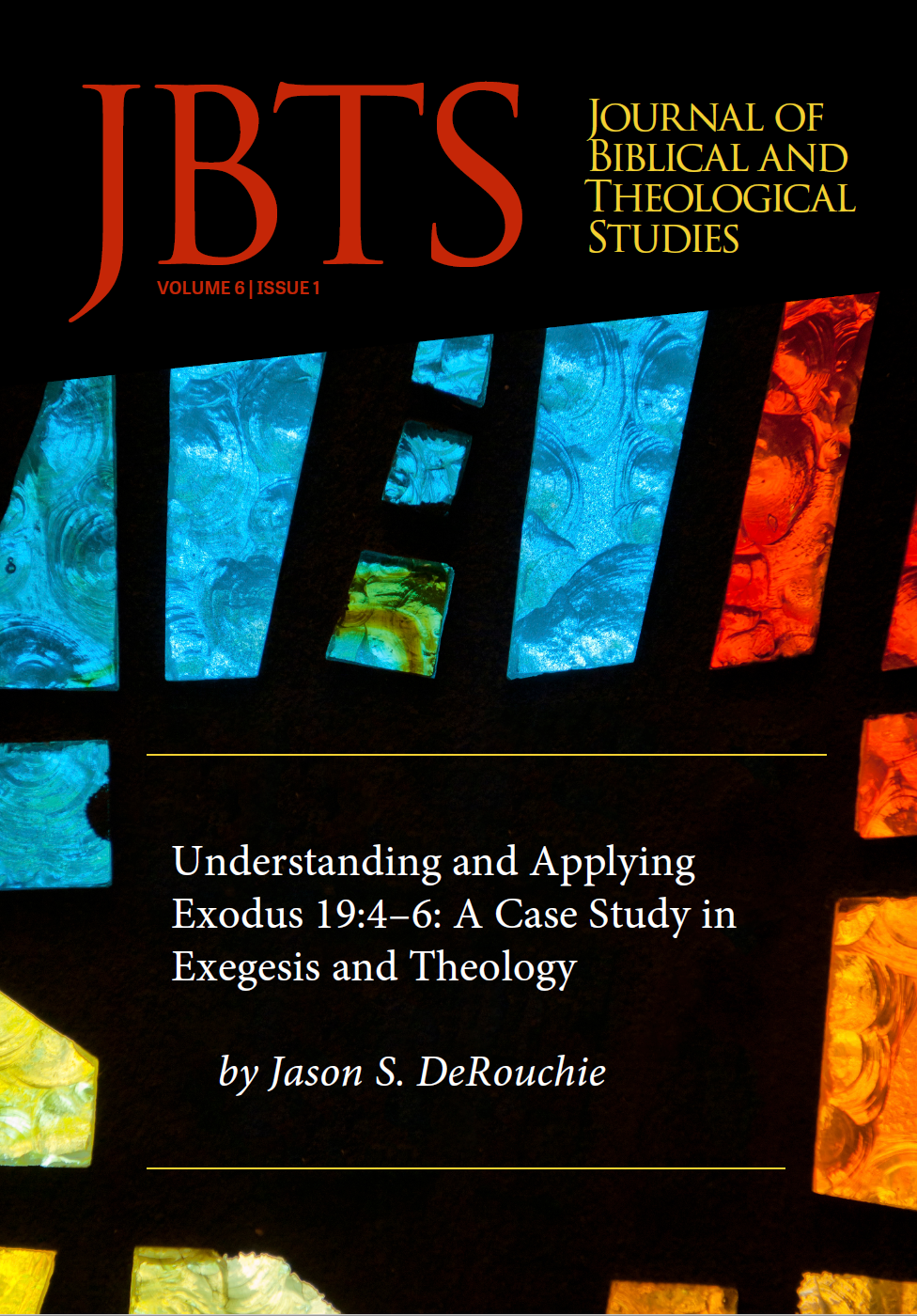Understanding and Applying Exodus 19:4-6: A Case Study in Exegesis and Theology
Jason S. DeRouchie
Research Professor of Old Testament and Biblical Theology Midwestern Baptist Theological Seminary [email protected] / https://jasonderouchie.com
Perhaps more than any other single text, Exodus 19:4–6 provides the Bible’s clearest and simplest snapshot of God’s revealed purpose for the old covenant. This essay seeks to interpret this passage within its immediate and broader biblical context, understanding and applying it as the Christian Scripture God intended (Rom 15:4; 1 Cor 10:11; 2 Tim 3:16–17; 1 Pet 1:12). The study also supplies a case study in exegetical and theological inquiry following the twelve steps outlined in my book, How to Understand and Apply the Old Testament.[1] Recognizably, the nine steps of exegesis and three steps of theology are all interrelated, and distinguishing them is somewhat artificial to the process of interpreting the Bible. Nevertheless, using a single passage to walk through the twelve steps should help students understand better the various aspects of exegesis and theology that are necessary for rightly handling God’s word of truth (2 Tim 2:15).
Read the full article: Understanding and Applying Exodus 19:4-6: A Case Study in Exegesis and Theology
[1] Jason S. DeRouchie, How to Understand and Apply the Old Testament: Twelve Steps from Exegesis to Theology (Phillipsburg, NJ: P&R Publishing, 2017). I adapt the various exegetical and theological discussions of Exodus 19:4–6 from the following pages in the book: 32, 123–25, 148–50, 170–72, 226–32, 253–56, 265–67, 282–85, 314–17, 329–33, 370–74, 400–407, 422–27. Used with permission.





